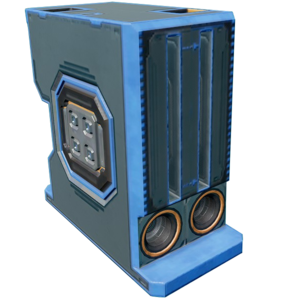Memory relay
Jump to navigation
Jump to search
Summary

The memory relay is a device used to transfer a data fileds from one memory chip to another, allowing for data fields to be linked with different field names.
Memory relays separate sub-networks allowing for one-way broadcasting of variable changes, enabling the creation of modular YOLOL systems.
Basic information
- Memory Relays are connected to two separate data networks via cable sockets at both ends of the device, or by conection to modular device racks.
- One side (left) of the relay acts as the "input" connection.
- The other side (right) acts as the "output" connection.
- When the relay is powered, changes made to device fields on the input chip will propagate to the coresponding device field on the output chip.
- For example the field in position 3 on the input chip will be propagated to the field in position 3 on the output chip, regardless of name.
- Values between networks are not automatically synchronized.
- This means that connected networks may contain different values for similarly named device fields.
- Both sides of the relay must be enabled for device field changes to propagate.
Device fields
To learn more about how to use fields, consult these wiki pages:
| YOLOL field | description | range |
|---|---|---|
| IsMasterEnabled | On / Off, left side | 0 / 1 |
| IsEnabled | On / Off, right side | 0 / 1 |
